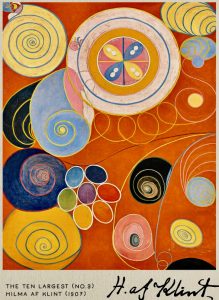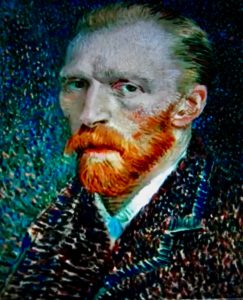Visual Art is a gigantic commercial business, generating huge sums of yearly income measured in the amount of billions. How and who are truly reaping the real benefits? Is a question well worth the rewards of time it will take to accurately find out.
Researching the lives of visual artists in the Modernist European Movements and Traditions. The majority of these artists appears to be victims of financial ignorance, regardless of their personal circumstances.

Although, what artists produce are the material source and vital input within the economic structures of the Fine Arts World, the visual artists in the system seems to be on the outside looking in.
Frequently, under the public spotlight and academic’s magnifying glasses, visual artists, in general, appear to be of minor importance. In contrast to the private professionals within the high administrative orders, engaged with the business, promotions and selling of the visual arts.
If no one wants what the artist produce, then the created works remain incomplete and possibly dead.For the artist success is achieved when the ideas, creativity, craft and techniques pulls together, realised, manifesting all that were initially in mind.
Commercial success are in the hands of astute dealers who value the work, including the financial weight of collectors, and visual art lovers who are prepared to take the risk of purchasing.
When confronted by appreciative audiences with a certain level of knowledge, great works of art takes on a life of its own, gathers momentum and added value as it tours around the art circuits of the world by approval.
Regardless of the private criticisms, public scandals and everything else added. Damien Hirst, is probably the best example of a contemporary artist taking personal control of the financial incomes, generated through his creative activities and endeavours.
The children of Pablo Picasso, are also excellent reference points of how to navigate and manage the legacy and estate of an Artist, who by reputation is an icon and symbol of the modern art world. The estate of the artist, in partnership with all invested shareholders, are managed to benefit the immediate family. And of course, for the careful preservation on behalf of the growing global art audiences.

In pure irony, Vincent Van Gogh, was not able to sell one single painting during his life-time.
The usual method after the demise of a serious artist with some reputation. Business associates set up a foundation to administrate and manage the artist works.
Many pieces works are in collections scattered around the world, keeping track of their movements is no easy tasks. Not to mention the regular streams of forgeries entering the market place.
Artists of repute, leaving this world without adequate preparations, become vulnerable to the army of culture vultures surrounding the lucrative visual arts world, scramble to grip anything, sharing the deceased valuables among themselves.